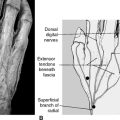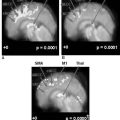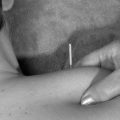CHAPTER 16 Using the Integrative Neuromuscular Acupoint System for Acupoint Injection Therapy
INTRODUCTION
In the United States, Dr. Janet Travell, without previous knowledge of Chinese acupuncture, discovered and published the patterns of pain trigger points in 32 skeletal muscles in 1952.1 The locations of these trigger points basically matched most acupoint locations in the ancient Chinese system. Dr. Travell injected anesthetics (0.5% procaine in physiologic saline) into these trigger points to treat myofascial pain symptoms such as lower back pain. Today the solutions used for injection may include isotonic saline, procaine, lidocaine, Botulinum toxin A (BTA), corticosteroids, and other longer-acting local anesthetics. Some of these injected solutions have some myotoxic effects.
INMAS AND CHRONIC MYOFASCIAL PAIN
TECHNICAL CONSIDERATIONS OF INJECTION THERAPY
Commonly Used Solutions for Injection Therapy
Isotonic saline can be injected into the HAs for pain relief. A controlled, double-blind comparison between isotonic saline and a myotoxic, long-acting anesthetic (0.5% mepivacaine) showed that isotonic saline offered the same or even better efficacy than mepivacaine.2
In general, procaine and lidocaine are the least myotoxic when used at 1% or lower concentrations. Solutions stronger than 1% become significantly myotoxic. Dr. Travell recommended a procaine concentration of 0.5% in physiologic saline, and she found that higher concentrations gave no additional pain relief.3 Longer-acting anesthetics are more myotoxic without appreciable clinical advantage in treating myofascial pain. Local anesthetics at a lower concentration (0.25%) will selectively block small fibers, while higher concentrations will also block the larger A-δ (IIIb and IIIa) fibers.4
Local anesthetics definitely reduce the sensation of soreness and other discomfort immediately after injection. However, evidence shows that the efficacy of injection therapy in pain relief does not depend on any specific properties that these injected substances may possess, but rather on the stimulation effect of the needling used for their injection.5
HISTOPATHOLOGIC EFFECT OF INJECTION THERAPY
A classic experiment using intramuscular injection in rats showed that injection of low volumes (1 cc or less) and low concentration (1% or less) caused only occasional, minor damage to muscle fibers. A temporary inflammatory reaction developed in 24 to 72 hours: a mild infiltration of neutrophils, lymphocytes, and macrophages was observed during this time. The damaged fibers was eventually phagocytized. No changes could be detected beyond 7 days.6 These established data match our clinical observations.
1 Travell J, Rinzler SH. The myofascial genesis of pain. Postgrad Med. 1952;11:425-434.
2 Frost FA, Jessen B, Siggard-Anderson J. A control, double-blind comparison of mepivacaine injection versus saline injection for myofascial pain. Lancet. 1980;1:499-501.
3 Travell J. Temporomandibular joint pain referred from muscles of the head and neck. J Prosthet Dent. 1960;10:745-763.
4 Bekkering R, van Bussel R. Segmental acupuncture. In: Filshie J, White A, editors. Medical acupuncture: a Western scientific approach. Edinburgh: Churchill Livingstone; 1998:109.
5 Baldry P. Trigger point acupuncture. In: Filshie J, White A, editors. Medical acupuncture: a Western scientific approach. Edinburgh: Churchill Livingstone; 1998:39.
6 Pissolato P, Mannheimer W. Histopathologic effects of local anesthetic drugs and related substances. Springfield, Ill: Charles C. Thomas, 1961;40. 41, 60, and 71.






